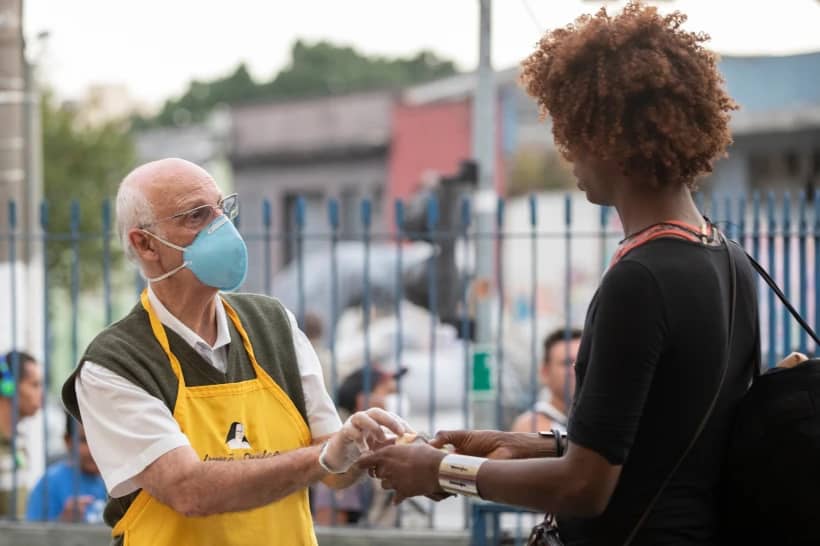The third bishop of Haiti’s Jérémie Diocese must be the only Catholic bishop in the world whose cathedral roof has collapsed twice in earthquakes and was ripped off once by a Category 4 hurricane.
“We are alive,” Bishop Joseph Gontrand Decoste told the Jérémie radio station JCOM in an April 14 video interview. “Depi tet ou pa koupe gen espwa mete chapo,” the 64 year old bishop said with a smile, peppering the interview with Creole proverbs. “As long as your head’s still on your shoulders, you can hope to put a hat on it.”
Many locals will be preparing their finest hats for the mid-April diocesan golden jubilee, which also honors Bishop Carl-Édouard Peters, the first bishop, whose heart failed in 1975 as he cheered on Jeremie’s winning soccer team.
The St. Louis Cathedral, whose roof collapsed for a third time in the August 2021 earthquake, has been temporarily patched up for the occasion.
“We cannot fail to celebrate,” said Decoste, as he waits for a recommendation by engineers engaged by PROCHE, Partnership for the Reconstruction of the Church in Haiti.
The 1901 cathedral, considered a national heritage, has always been an emblem of the remote coastal outpost of Jérémie. At one time the city was connected to the rest of the country only by boat or a rocky, mountainous winding dirt track prone to flooding. A new road connecting Jérémie to Les Cayes, 60 miles to the southeast, was completed in 2015, firing up the local economy.
Today, the region cut off from capital city, Port-au-Prince, by armed gangs who control Martissant, a poor suburb on the only road leading to Haiti’s southwestern peninsula. Robberies and kidnappings for ransom have restricted passage to those who can afford to take small airplanes. Goods from the capital are restricted to expensive boat transport.
“We need an end to armed gangs stopping small farmers from selling their produce in the capital,” the bishop said.
“Politicians need to assume their responsibilities and stop criminals circulating with impunity, by showing a presence, providing security and protection for lives and goods so we can move around the country at liberty.”
The bishop’s 13 years in the diocese have not been easy ones. Five months after his consecration, the January 2010 earthquake all but destroyed the Jérémie cathedral. In 2016, Hurricane Matthew slammed into Haiti’s southern peninsula, again destroying St. Louis Cathedral. Last August, the cathedral roof collapsed for a third time.
The government has been largely absent from the diocese, and social problems engendered by poverty and vulnerability of the population to natural disasters are being off loaded on the church, the bishop said.
Each of the diocese’s 57 parishes has a school attached to it, and the diocese also runs 20 basic health centers.
“If there was a political commitment to social organization and tackling poverty, the church would not have poor people knocking on its doors every morning,” Decoste said.
Yet there is potential here. The Grand’Anse department is the most forested in the country; lush green vegetation contrasts with the barren landscape of Port-au-Prince. The bishop spoke of a recent visit to a rural section of the diocese.
“The land is fertile, there are cabbages, leeks, carrots, all kinds of vegetables. But the state needs to provide agronomists to help people work the land and produce. As it is, fruit trees are wasted,” he said in the JCOM interview.
Decoste has a deep respect for trees, which he calls “sacred.”
“Human life is linked to trees. Without them, there is drought, which brings death.”
He also sees hope in young adults who tire of living a precarious life in Port-au-Prince. Three months after the 2010 earthquake, a group of 10 young professionals returned to the area from the capital, traumatized by the quake and its aftershocks.
“What can the church offer us?” they asked.
“That question haunted me,” the bishop said. It also inspired a project to build a campus of the Notre Dame University of Haiti in Jérémie in partnership with the Marist brothers. The first brick was laid in February. The plan is to build up the university over 10 years and staff it with priests who have studied in a broad range of disciplines in other countries.
While that campus may be a distant dream, today, many of the diocese’s 106 priests often walk several hours to reach remote communities where there are no roads.
“They find a way of reaching those who need them.” It is a way of showing people they have value, the bishop said, reiterating: “Where the state is absent, the church is present.”














